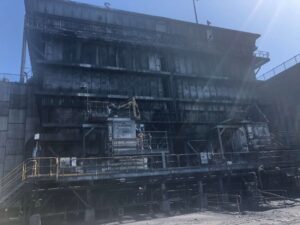
Ensuring Vibrating Screens’ Motion
Ensuring Vibrating Screens’ Motion Location Emerald, QLD Services Project Overview Vibrating screens are crucial in coal handling preparation plants (CHPP). Their performance is dependent on

Ensuring Vibrating Screens’ Motion Location Emerald, QLD Services Project Overview Vibrating screens are crucial in coal handling preparation plants (CHPP). Their performance is dependent on

ROM Bin Structural Health Monitoring Location Hail Creek, QLD Services Project Overview The main objective of this project was to develop a technique for reliable,

R&D of a Remote Mobile Rail Tracking Machine Location Nelson Point, WA Services Project Overview Mincka was commissioned to design and fabricate a remote vehicle

CHPP Vibration Survey Location Emerald, QLD Services Project Overview Mincka was commissioned to run a vibration survey in the CHPP building in Emerald, Queensland. The

R&D to Develop an Asset Management System Location Nelson Point, WA Services Project Overview The client wanted to reduce the time required by the maintenance